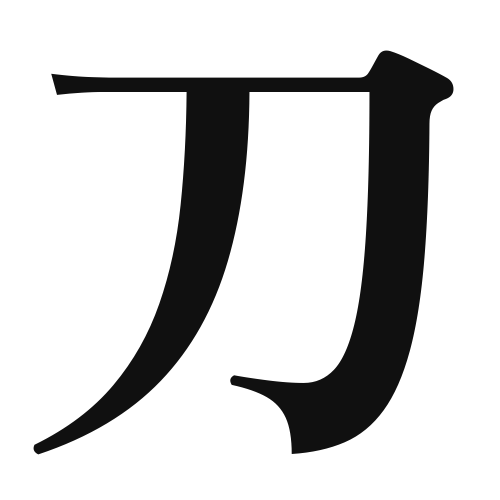1. Overview of Meaning
The kanji “刀” (pronounced “katana” or “tō”) means “sword” or “blade.” It represents a sharp weapon typically used for cutting or slashing.
2. Formation and Radical
The kanji “刀” is a pictogram, which means it visually represents the object it signifies. It depicts a blade with a handle. The radical for this kanji is 刀, which is also used in other kanji related to cutting or blades.
3. Examples of Usage
Common words and phrases that include “刀” are:
- 刀剣 (とうけん, “tōken”) – sword
- 日本刀 (にほんとう, “nihontō”) – Japanese sword
Example sentence in daily conversation:
「彼は刀を使って、木を切った。」(かれはとうをつかって、きをきった。) – “He used a sword to cut the wood.”
4. Synonyms and Antonyms
Similar kanji with related meanings include:
- 剣 (けん, “ken”) – sword, typically refers to a double-edged sword.
Antonyms include:
- 盾 (たて, “tate”) – shield, which is used for defense rather than offense.
5. Cultural and Historical Background
The kanji “刀” is deeply rooted in Japanese culture, particularly in the context of the samurai and their weapons. The Japanese sword, or “nihontō,” is not only a weapon but also a symbol of honor and craftsmanship.
Proverbs and idiomatic expressions related to “刀” include:
- 刀を抜く (かたなをぬく, “katana o nuku”) – “to draw a sword,” meaning to take decisive action.
